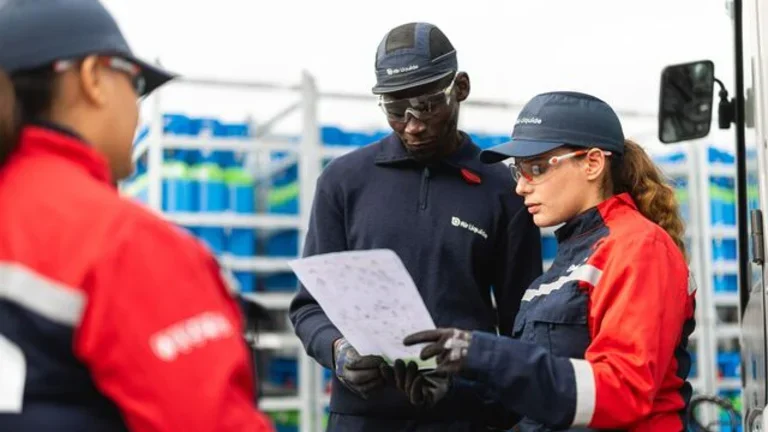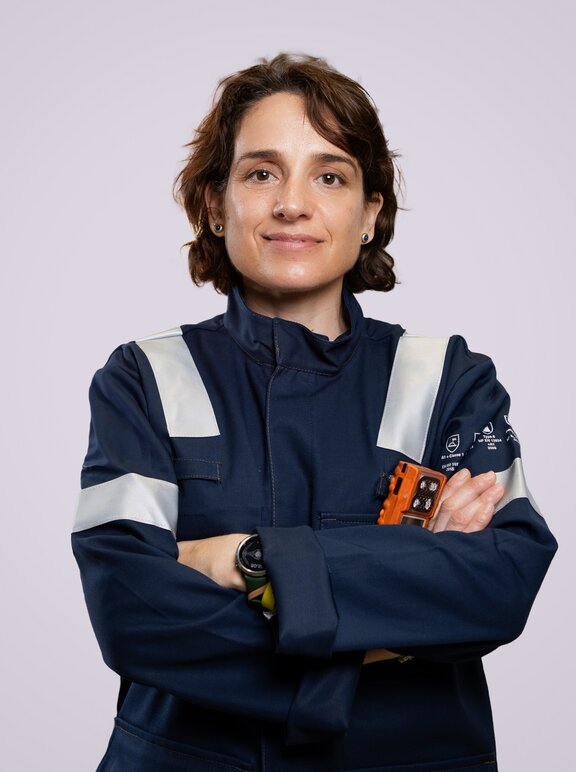Born in 1902 from an invention, Air Liquide has naturally made innovation the driving force behind its growth strategy. To tackle today’s and tomorrow’s challenges, our teams turn intuitions into cutting-edge technologies and practical solutions. By harnessing these innovations, the Group optimizes its own and its customers’ industrial processes, accelerates the energy transition, contributes to technological progress, and improves patients’ quality of life.
Air Liquide’s innovation approach is part of an open and global ecosystem. It is supported by our 5 Innovation Campuses in Europe, the United States, and Asia, and by the Campus Technologies Grenoble in France. Alongside our scientific and industrial partners, Air Liquide’s R&D teams are working actively to constantly deepen the Group’s knowledge of essential small molecules in order to harness their full potential and provide new solutions to the challenges facing industry, high technology, and healthcare.
The Group’s innovation is also nourished by technologies developed by promising start-ups. These may get support from ALIAD, Air Liquide’s venture capital arm, or from Accelair, our start-up accelerator, which provides them with experimentation spaces and a support program. These two entities help start-ups continue their growth and bring their technologies to market, with assistance from Air Liquide experts.
366 new patents
More than 3,000 employees dedicated to innovation
350 innovation partnerships with academics, industrial partners and start-ups
309 million of innovation expenses
Focus on promising technological solutions
Decarbonizing the glass industry using hydrogen
“My team is conducting a series of combustion tests under real-life conditions to replace natural gas with hydrogen to reduce the CO₂ emissions of the glass industry. We are developing a technology to combust hydrogen along with oxygen, which will enable glass furnaces to emit only water vapor. SDG Pharma, a manufacturer of pharmaceutical-grade glass containers, contacted us to test our technology at its site, as it is looking for practical solutions to lower its furnace’s CO₂ emissions.”
Anna-Maria Pubill Melsió
Combustion Team Leader, Innovation Campus Paris, Air Liquide
Reliability and safety at the heart of Subleem™, an innovation for semiconductors
“In 2024, Air Liquide launched Subleem™, a new solution combining solid precursors and distribution systems for semiconductor manufacturing. Precursors are the ultra-pure materials needed to create electronic chip components, which are deposited layer by layer with extreme precision, measured to the nanometer. Our new distribution systems convert solid precursors directly and on a large scale into gas phase through sublimation, a first in the industry. Subleem™ ensures guaranteed supply, delivering an uninterrupted, reliable, and high flow of vaporized precursors during the semiconductor manufacturing process. This is especially valuable in the production of the most advanced logic and memory chips, which will be integrated in tomorrow’s electronic devices.”
Nicolas Blasco
Senior Expert Electronics Technology Integration, Air Liquide
Unlocking hydrogen’s potential
“The ammonia-cracking technology that we have developed represents a major step forward in the production of low-carbon hydrogen. Right now, the challenge with hydrogen is to deploy it at a large scale. With this in mind, we tested and optimized our technology at a pilot plant in Antwerp, Belgium. The pilot is the first step towards the construction of an industrial-scale renewable ammonia cracking plant, for which the Group has obtained support from the European Innovation Fund. It will contribute to the development of an ammonia-based low-carbon hydrogen production and distribution industry in Europe.”
Dieter Ulber
Hyco Technologies Director, Air Liquide
Joining forces to produce electrolyzers
“Accelerating the deployment of industrial electrolyzers is indispensable to scale up the production of low-carbon and renewable hydrogen. The gigafactory created in collaboration with Siemens Energy enables us to bring together complementary expertise for the mass production of PEM(1) modules that are needed to build electrolyzers. This enables us to scale up the development of low-carbon and renewable hydrogen production units at a competitive cost. After the inauguration of the PEM electrolyzer in Oberhausen (Germany) in 2024, this collaboration will reach a new milestone with the Air Liquide Normand'Hy project in France, which is a major contribution to the energy transition in Europe.”
Marie-Khuny Khy
Product Line Director Electrolysis, Air Liquide






